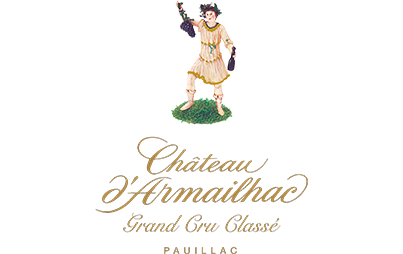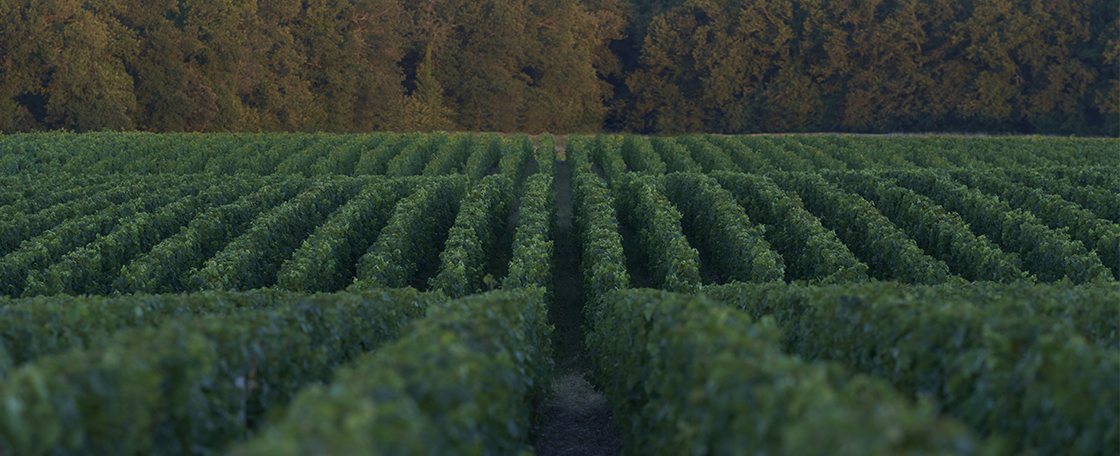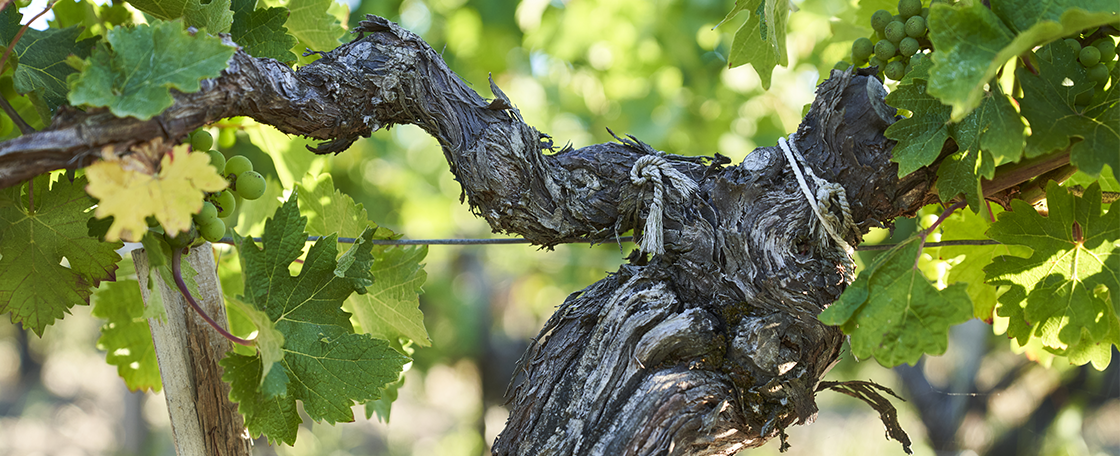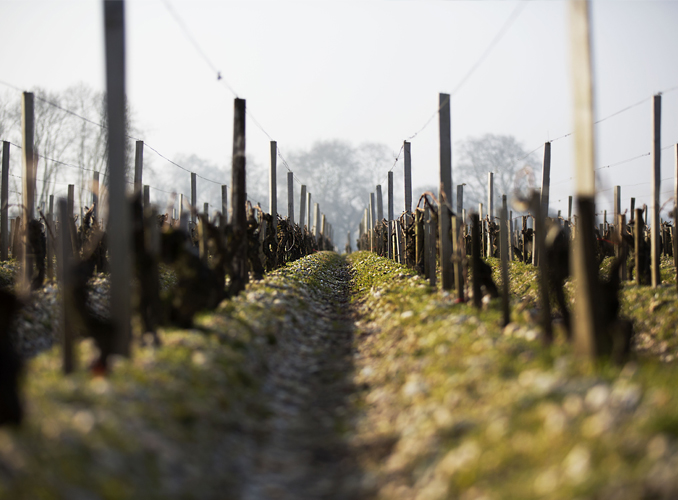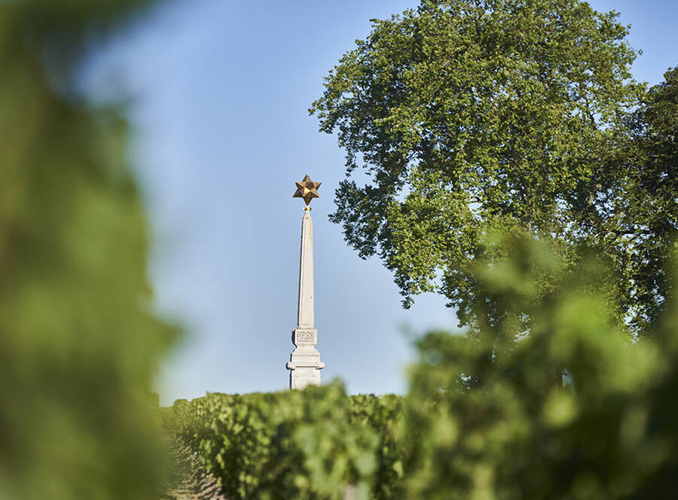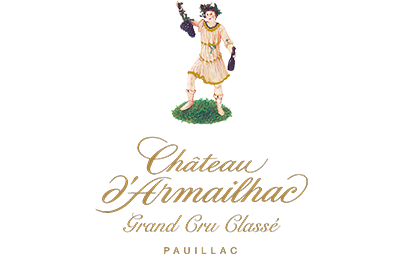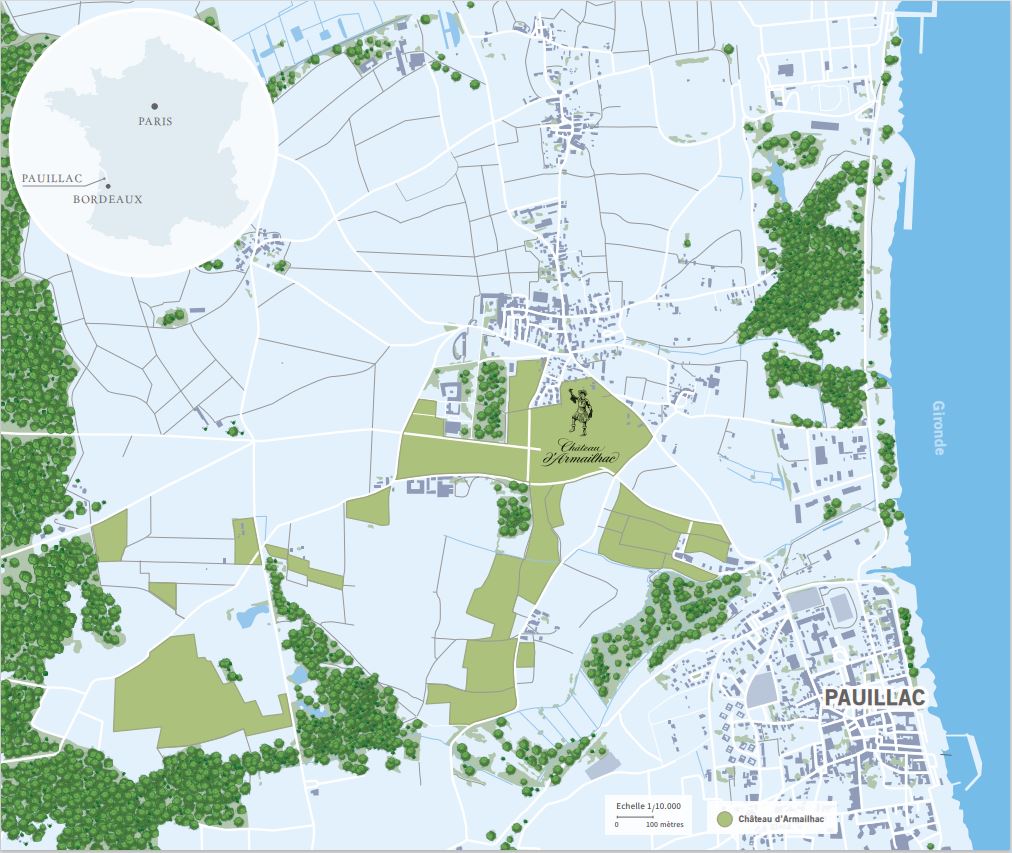Pauillac by definition
Château d’Armailhac is adjacent to Château Mouton Rothschild to the north. The south-facing vineyard spans 76 hectares (188 acres) on three different gravel banks, giving it all the typical features of the Pauillac appellation. The average age of the vines is 40 years.
In the heart of the terroir, the Plateau des Levantines and the Plateau de l’Obélisque, made up of light and very deep gravel, are ideal for growing Cabernet Franc and Cabernet Sauvignon. The prominence of Cabernet Sauvignon in the Médoc is closely linked to Château d’Armailhac, since Armand d’Armailhacq, its owner at the time, introduced and promoted the variety in the region (with Baron Hector de Brane).
Cabernet Franc, another traditional Bordeaux grape variety, also flourishes on the gravelly soil. The relatively high proportion of Cabernet Franc vines, which have an average age of 60 years, is unusual for a Médoc vineyard. They are mostly planted on the Plateau des Levantines. Made up of light gravel over limestone subsoil in which the vines can put down deep roots, it is an ideal terroir for expressing the variety’s elegance.
These old Cabernet Franc vines make a key contribution to the identity of Château d’Armailhac.
The Pibran outcrop is where the finest Merlot parcels are to be found. The grapes reveal all their character in an ideal terroir of moderately deep gravel in clay-sand soil that has more limestone in the north.
Petit Verdot is planted on the Béhéré bank, made up of lighter, gravelly sand, and thrives on the naturally better-drained and damper soil.
Château de d’Armailhac vineyard
55% Cabernet Sauvignon
35% Merlot
8% Cabernet Franc
2% Petit Verdot
The estate is an ancestral storehouse of plant material. In order to preserve this inestimable heritage, selections of the most interesting vines of each variety are kept as the vineyard is renewed, for propagation in Baron Philippe de Rothschild SA’s own nursery. As a result of these massal selections, some replanted vines are direct descendants of those found historically in the parcels of the Château d’Armailhac vineyard, helping to secure its long-term sustainability by preserving the genetic diversity that is a key factor for ensuring high-quality wines.
With that wealth of complementary terroirs, each grape variety can be grown in conditions that enable it to achieve its full qualitative potential. Likewise, their diversity helps to moderate the potential weather-related excesses of certain years. This unique characteristic of Château d’Armailhac is reflected in an elegant classicism that is a regular feature of the wine’s style, whatever the vintage.
